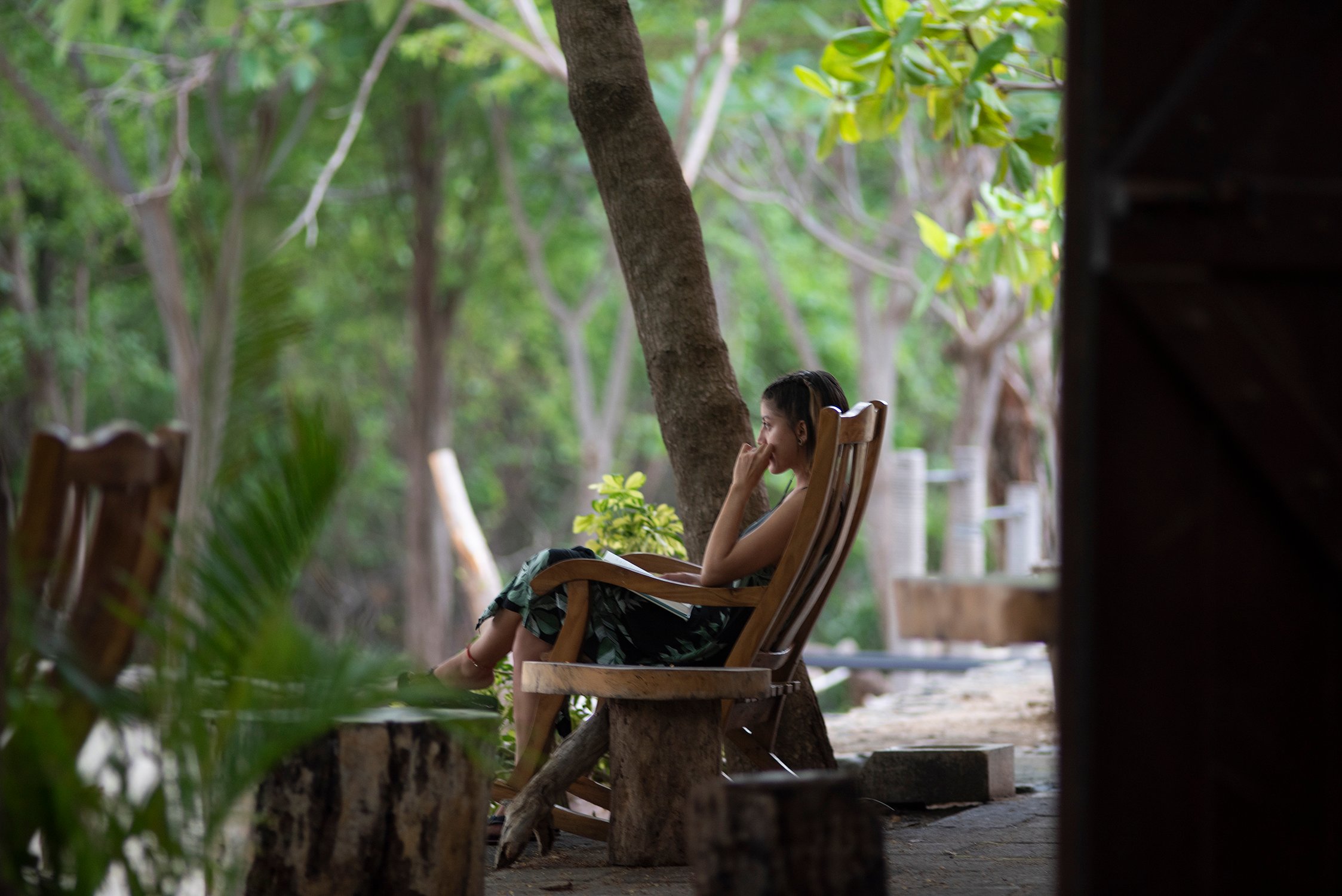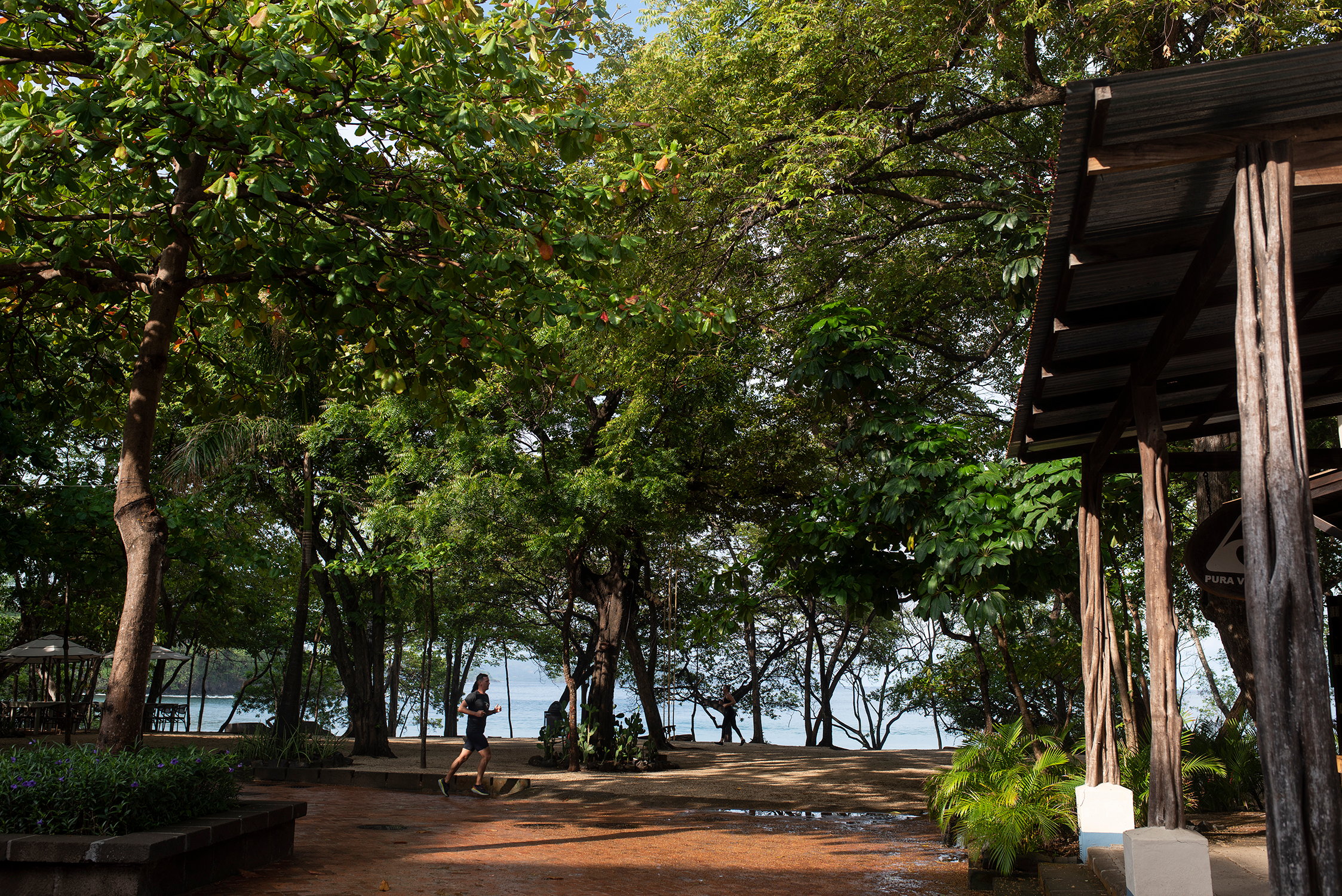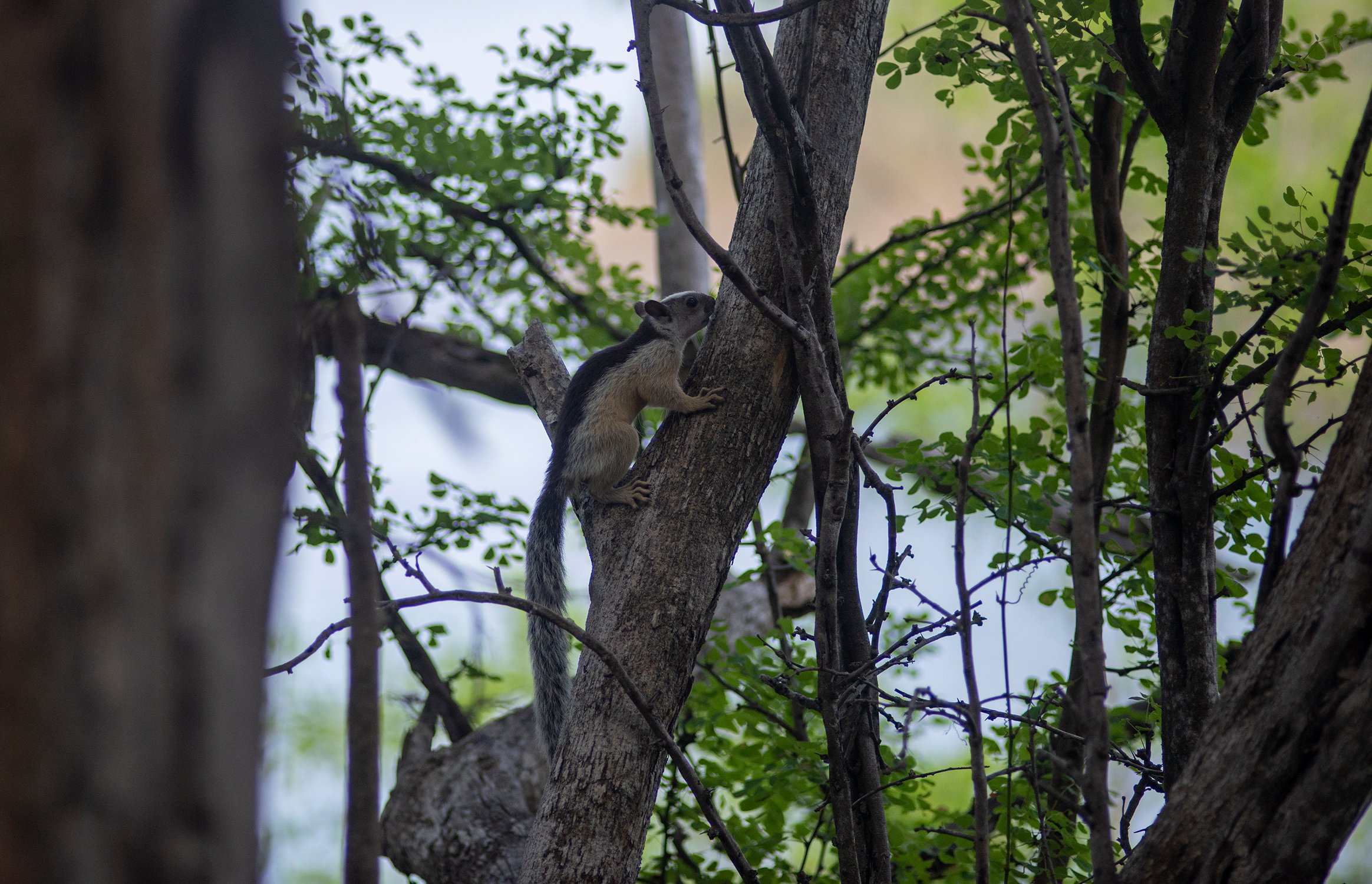Sunday March 17, 2024.
Greenery in Town: Blending Beauty with Purpose
When Las Catalinas was established, eighty percent of the acquired land was dedicated in perpetuity to the restoration of a tropical dry forest reserve. This deliberate decision enabled town to develop in symbiosis with its surroundings and maintain a constant connection to the natural beauty of Guanacaste. As the world celebrates Saint Patrick’s Day, we celebrate in our way, with the green landscapes that envelop Las Catalinas.
Nature’s presence is felt throughout town, with plants, trees, shrubs, green spaces, and flowers enhancing pedestrian streets and plazas, adding to town’s natural beauty. The use of greenery is guided by three sets of criteria: sustainability, purpose, and adherence to the town's design ethos.

Native plants are prioritized, as are other plants that are well-suited to the local habitat, ensuring they flourish in the dry tropical climate while enhancing the environment's natural beauty. The plants chosen must be adaptable to periods of extreme sunshine and rain, Guanacaste’s soil conditions, and the salinity of the coastal area.

All urban greenery is in line with the town's design philosophy, which prioritizes preserving topography and views, ensuring privacy, and enhancing walkability. Mature trees with large leaves provide ample shade, creating tranquil spots to pause while strolling through town. Plants that do not require irrigation, grow quickly, and can provide privacy are ideal for creating natural divisions that are light and allow for air circulation. Often, plants that are incorporated offer food for people or animals, or support the lifecycles of other animals on the property, such as through pollination or the composting cycle.

The green spaces surrounding town offer hiking and mountain biking trails for the community and provide a habitat for animals. It may initially appear contradictory for development within a forest to aid conservation efforts, but the multi-use trails within Las Catalinas have emerged as invaluable assets in forest rejuvenation and fire prevention. These trails serve a dual role, effectively addressing issues such as runoff and erosion induced by wind and rain. By functioning as a drainage system and offering natural structural support for the forest ecosystem, they help maintain the ecological balance.
.jpg?width=1001&height=1500&name=DSC_6825%20(1).jpg)
This thoughtful approach ensures that each plant serves a purpose, whether it's supplying fresh herbs for the kitchens, enhancing the scenic beauty of walkable plazas, or staying in touch with nature.